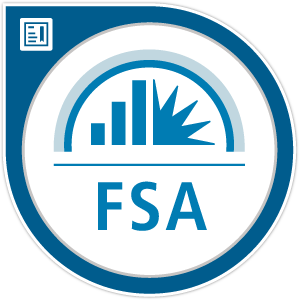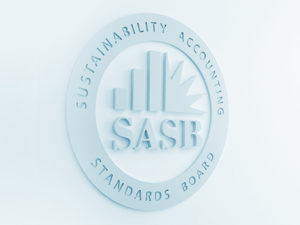How is sustainability driving competitive strategy?
In 1979, Michael Porter developed his now famous “Porter’s Five Forces” model, bringing together for the first time economic analysis with competitive firm strategy, showing the world that managers and businesses often define competitive strategy too narrowly.
The phenomenon of narrowly defining competitive strategy is occurring again. Companies, managers, and investors are leaving value on the table by not accounting for or understanding how sustainability topics affect industry performance and business operations. To expand the scope of competitive strategy, it is necessary to ask how environmental, social, and governance (ESG) issues are shifting the industry landscape and creating new opportunities and threats to firms’ strategic positions.
To best explore this question, the lens of Porter’s Five Forces is helpful to see how accounting for and managing sustainability issues play an increasingly important role in defining competition within an industry:
1. Threat of New Entrants
In the office furniture industry, the sustainability characteristics and certification requirements of furniture products act as a likely barrier to new entrants. Larger, incumbent firms are better able to build at scale, and to more efficiently certify products that can add to the LEED certification of new buildings. The costs and expertise needed to obtain sustainable certifications, such as those issued by the BIFMA or FSC can also create barriers to entry for smaller or new firms. These certifications can lead to significant added expenses, with costs up to 30-40 percent more than traditional materials, which can be minimised through larger-scale operations.
2. Bargaining Power of Suppliers
The bargaining power of suppliers increases when relatively few alternatives are available to downstream firms, allowing suppliers to dictate prices. In the food and beverage industry, supply-chain exposure to climate change is increasing as issues of water and resource scarcity can lead to higher prices for inputs. One beverage company has stated that they face increasing “raw material, commodity, and water costs as a result of weather, climate changes, and the availability of water.” The risk of long-term adverse impacts on beverage companies’ ability to secure key ingredients has led to the development of strategies and partnerships to lower exposure to the pricing pressure of suppliers, particularly in water-stressed regions. For example, a coalition of leading global beverage companies has formed the Beverage Industry Environmental Roundtable, in part to promote sustainable and water-efficient agriculture as a means of lowering its input prices.
3. Bargaining Power of Buyers
Large retail customers can have significant bargaining power over suppliers and influence the sustainability characteristics of the products they purchase and ultimately sell to consumers. This may directly result from a retail company’s competitive strategy to address growing consumer demand for sustainable products. For example, the Sustainable Product Expo, a retail industry summit convened by Walmart, brought together 16 CEOs to accelerate supply-chain innovation toward products and processes that are more efficient and produce less waste. Walmart also uses a sustainability scorecard to influence the more than 100,000 members of its supply chain to address problem areas, drive efficiency, and reduce waste.
4. Threat of Substitute Products or Services
New regulations and growing consumer preference for sustainable products are changing the containers and packaging industry. As trends shift in favour of more environmentally friendly packaging, demand for traditional substitute materials (metal, glass, plastic, and paper) will also change as their environmental characteristics become better understood. A recent survey in 2014 by the Can Manufacturers Institute of 400 executives and managers found that 98 percent of these professionals anticipate increases in consumer demand for sustainable packaging within the next year. That expectation explains why Coke and Pepsi are competing to bring more sustainable, plant-based plastic bottles to market, which means manufacturers of traditional PET bottles could risk losing market share if they don’t respond. By substituting inputs that better meet consumer and regulatory demands, the sustainable packaging market is projected to grow to $244 billion by 2018.
5. Rivalry Among Existing Competitors
Firms constantly position and re-position themselves to gain competitive advantage in the marketplace. They typically compete on price or with new products and services, but companies also increasingly differentiate themselves through sustainability performance. For some companies, sustainability has become central to their rivalry—and not just for building brand equity. For example, fleet efficiency programs at FedEx and UPS have direct financial and environmental impacts. With fuel costs representing 11 percent of FedEx’s total operating costs, savings captured through efficiency programs can better position them to reduce costs for customers and provide value to investors.
The forces of competitive strategy are changing, and sustainability is a driver for many of these changes. Firms, analysts, and investors can no longer afford to ignore the link between sustainability performance and the competitive landscape of the market. The use of Porter’s Five Forces shows that today’s businesses are capturing value and creating competitive advantages by accounting for and managing sustainability risks and opportunities.
To help companies and investors capture sustainable value, SASB is developing industry-specific guidance for material sustainability topics in more than 80 industries. SASB standards enable companies to disclose decision-useful information to investors and to manage and improve performance on the non-financial factors most likely to impact company value.

Interested in learning how sustainability factors impact corporate value? The Fundamentals of Sustainability Accounting (FSA) Credential is the only credential that teaches you how sustainability information can be financially material, and what you can do with that information.
